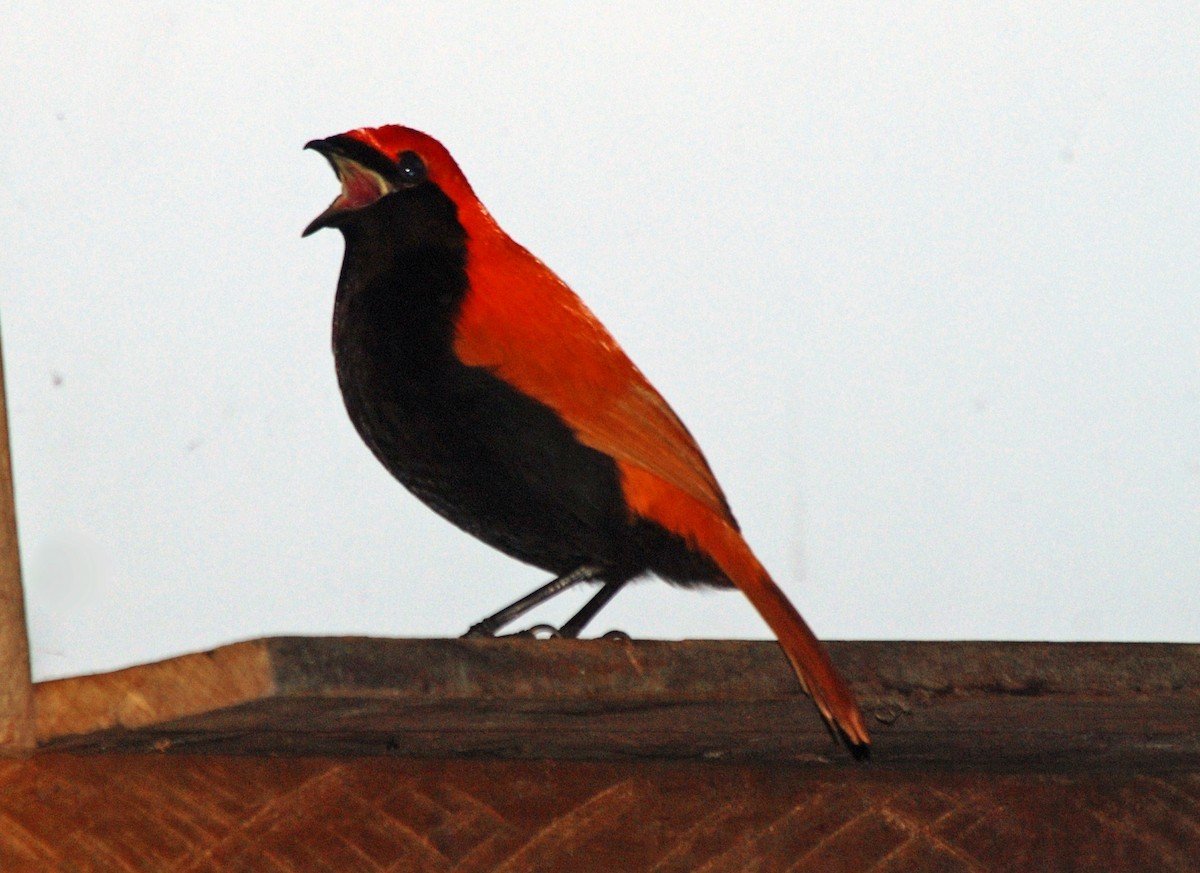Crested Satinbird
A species of Typical Satinbirds, Also known as Mocha-breasted Bowerbird Scientific name : Cnemophilus macgregorii Genus : Typical Satinbirds
Crested Satinbird, A species of Typical Satinbirds
Also known as:
Mocha-breasted Bowerbird
Botanical name: Cnemophilus macgregorii
Genus: Typical Satinbirds
Content
Description General Info
 Photo By Nigel Voaden
Photo By Nigel Voaden Description
The male red satinbird sports bright, orange to reddish-orange upperparts, tail and most of the head is of the same color as well. The cheeks, chin and everything below is a blackish to black color. The feature that granted their former name, sickle-crested bird-of-paradise, is the small group of fine, brownish-purple crest plumes that are usually obscure in the head/crown feathers and is usually raised during displays. The female is plain olive brownish above and light brownish below. Like other members of the family, they have weak feet and an extremely wide gape; the mouth is pinkish in color, and the bill is light grayish. They make harsh rasping calls and also some bell-like ringing sounds; some clicking and creaking calls have been recorded as well. 
Size
24 cm
Nest Placement
Tree
Feeding Habits
Crested Satinbird primarily consumes a variety of small fruits such as drupes and berries. They forage alone or in mixed-species groups, mostly from the mid to lower forest strata, and occasionally eat small molluscs. Unique, crested Satinbird swallows fruits whole without manipulation.
Habitat
The habitat of crested Satinbird primarily encompasses upper montane and subalpine forests, including regions characterized by forest edges, secondary growth, and disturbed vegetation. These birds are commonly found in environments with dense shrubbery, indicating a preference for habitats that offer both cover and foraging opportunities.
Dite type
Frugivorous
General Info
Feeding Habits
Bird food type

Fruit
Behavior
Red satinbirds are usually seen solitarily, pairs or occasionally in small groups at good fruiting trees. Like all satinbirds, their diet is exclusively fruits, in which their wide gapes are accustomed to. They are also sometimes seen feeding in association with birds-of-paradise in good feeding sites. Outside of fruits, they have been recorded taking earthworms and shelled molluscs. Breeding season not well studied, but is known to occur in August through January in the Eastern Central highlands. The female takes sole duty of rearing the chicks and building nests; she builds dome-shaped, globular nests reminiscent to bowerbirds' nests, made out of twigs, stems, leaves, etc. The clutch is most likely one egg, and it takes around 25–27 days for them to hatch. The chicks are fed mainly fruits and some invertebrates. 
Distribution Area
C. sanguineus is found in mountains of central and eastern New Guinea, i.e. Kaijende Highlands and Mt. Giluwe; no subspecies have been distinguished, though birds from the Kubor Mountains in eastern New Guinea are sometimes considered as a subspecies, C. s. kuboriensis. Red satinbirds are found in montane forests and forest edge, as well as subalpine forests at 2100–3650 m in altitude, but mostly at 2600–3500 m. 

 Photo By Nigel Voaden
Photo By Nigel Voaden Scientific Classification
Phylum
Chordates Class
Birds Order
Perching birds Family
Satinbirds Genus
Typical Satinbirds Species
Crested Satinbird